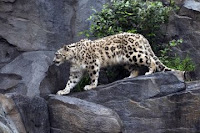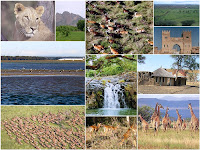 |
| Snow Leopard |
Great, wonderful news this week: first - a good number of the very elusive, endangered snow leopard has been discovered, thriving, in, of all places: Afghanistan. The
Wildlife Conservation Society has discovered a surprisingly healthy population of rare snow leopards living in the mountainous reaches of northeastern Afghanistan’s Wakhan Corridor, according to a new study.
The discovery gives hope to the world’s most elusive big cat, which calls home to some of the world’s tallest mountains. Between 4,500 and 7,500 snow leopards remain in the wild scattered across a dozen countries in Central Asia. Read more
here. The discovery was made using camera traps high up in the remote Afghan north-east mountains. As with most wild animals, the leopard's greatest danger is from man: mainly poachers.
 |
| Long-legged Borneo Rainbow Toad |
Then, another more elating,
wonderful news:
a toad that was thought to be extinct and was last seen 87 years ago - and never photographed - has been rediscovered in the jungles of Southeast Asia. Scientists from the
Universiti Malaysia Sarawak made this amazing discovery.
After months of searching, the team spotted the long-lost toad six feet (two meters) up a tree. A total of three rainbow toads—an adult male, an adult female, and a juvenile—were found......"They pieced its [behavior] together from related species," Moore said. "They suspected it might be climbing trees, and they knew to search at night along streams. But a lot of it was still guesswork."....The rainbow toad is only the second species—along with Ecuador's critically endangered Rio Pescado stubfoot toad (picture)—to be found from the most wanted list. Read more on the
BBC and
here.
The frog too faces its greatest danger from Man; thus: the exact location - unfortunately in an area in Malaysia which is not protected - where these toxic frogs have been discovered is being kept a secret. Should the location be known, poachers would descend and hunt the toads. Amphibians are disappearing; fast disappearing. Currently, the
ICUN estimates that about 41% of the world's amphibians are threatened with extinction; mainly due to diseases, poachers and human encroachment.




